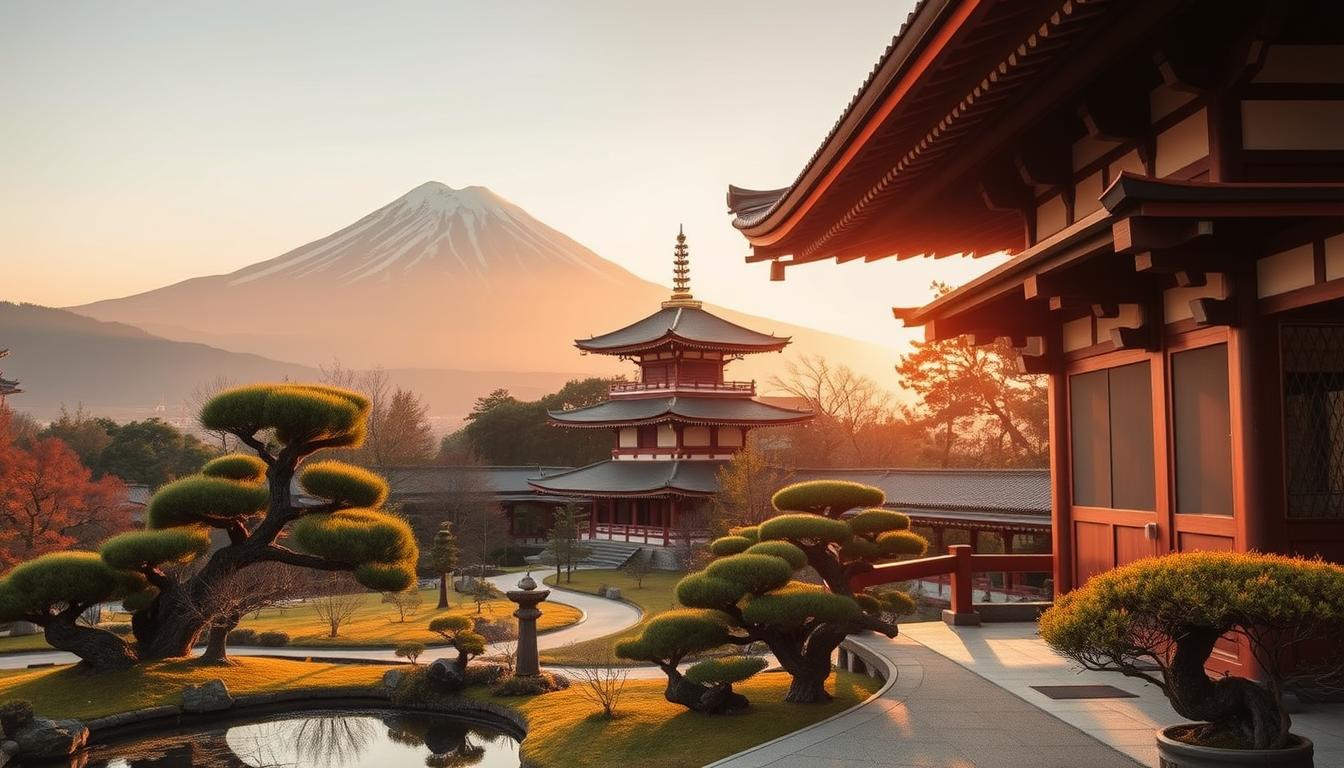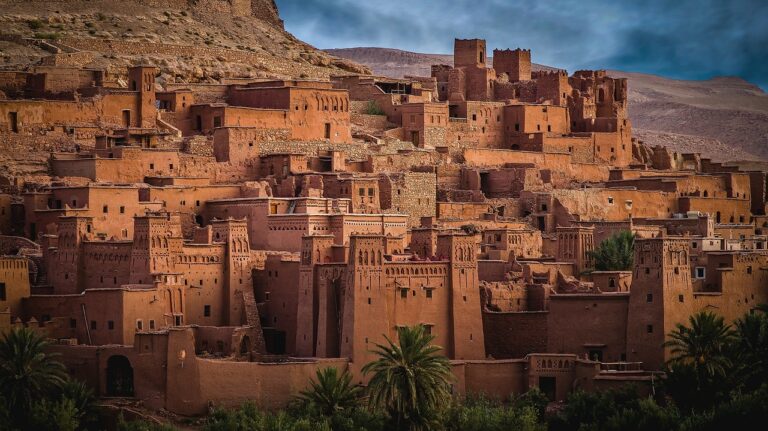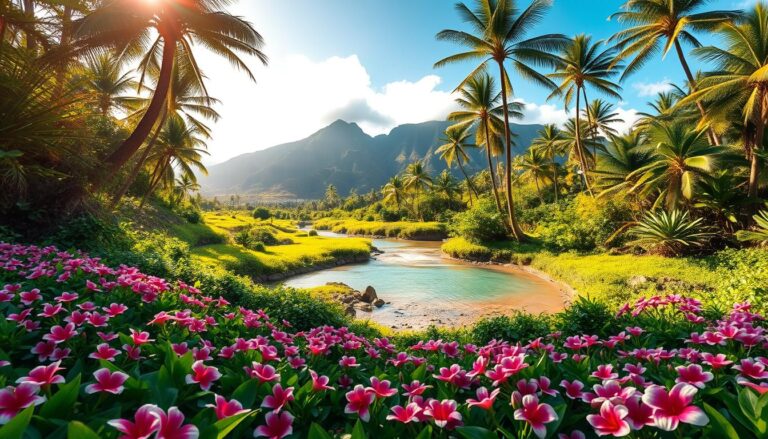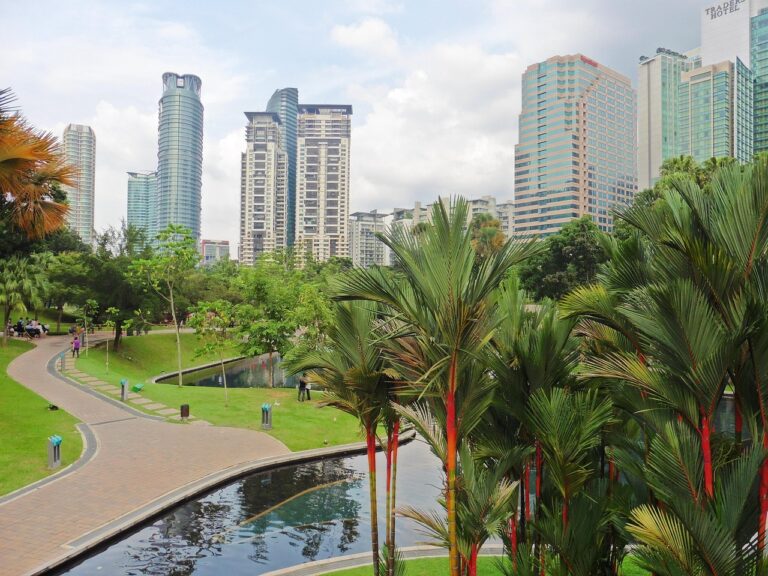Planning a trip to Japan can be a thrilling experience, but timing is everything. Japan’s distinct seasons offer a unique experience depending on when you visit. hereafter we will show you the best time to visit Japan:
Table of Contents

The country’s landscape transforms with the seasons, from cherry blossoms in the spring to autumn foliage in the fall. Whether you’re looking to enjoy summer festivals, winter sports, or simply explore the culture, we’ll guide you through the optimal times to experience Japan’s beauty.
Key Takeaways
- Japan has four distinct seasons, each offering unique experiences.
- Spring is ideal for cherry blossom viewing.
- Autumn is perfect for enjoying foliage.
- Summer is the season for festivals and beach activities.
- Winter is great for skiing and hot springs.
Understanding Japan’s Four Distinct Seasons
Understanding Japan’s seasonal variations is key to planning a memorable trip. Japan’s climate is diverse, with four distinct seasons that significantly impact the travel experience.
Climate Overview and Regional Variations
Japan’s climate varies greatly from north to south. The northern regions, such as Hokkaido, experience cold winters and mild summers, while the southern islands, like Okinawa, have a subtropical climate.
Northern vs. Southern Japan Climate Differences
The climate difference between northern and southern Japan is significant. Northern Japan experiences harsh winters with heavy snowfall, ideal for skiing and snowboarding. In contrast, southern Japan enjoys mild winters and hot, humid summers.
Typhoon Season and Natural Considerations
Typhoon season, which typically occurs in late summer, can affect travel plans, especially in southern regions. It’s essential to check weather forecasts before traveling during this time.
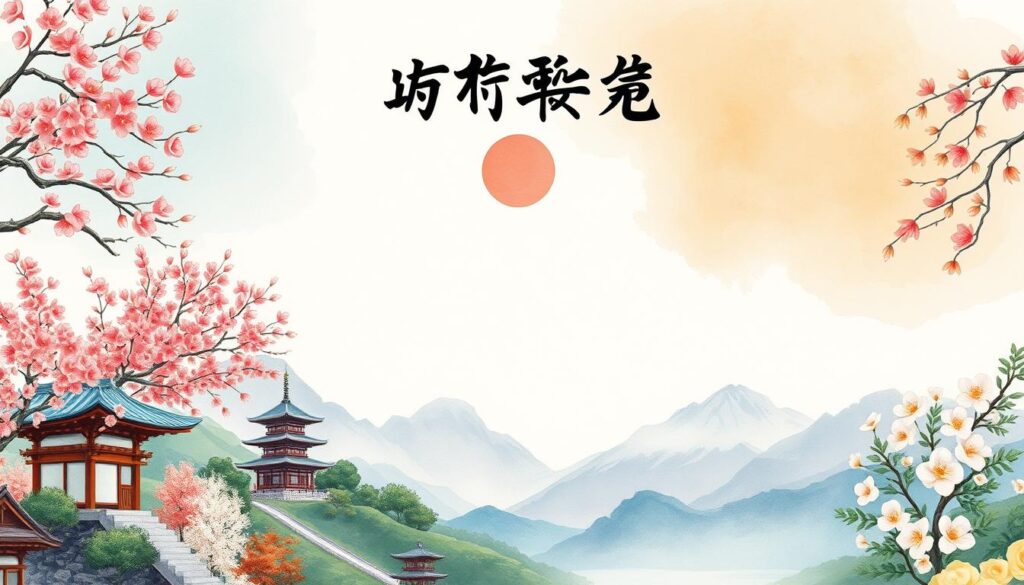
How Weather Impacts Travel Experiences
The weather in Japan significantly impacts travel experiences. Understanding the seasonal changes helps in planning activities and packing accordingly.
Seasonal Clothing Requirements
Packing the right clothing for the season is crucial. For instance, warm clothing is necessary for winter, while light, breathable clothing is best for summer.
Indoor vs. Outdoor Activity Planning
The weather also influences whether to plan indoor or outdoor activities. For example, visiting museums during hot summer days or enjoying outdoor festivals in spring.
| Season | Weather | Activities |
|---|---|---|
| Spring | Mild temperatures | Cherry blossom viewing, outdoor festivals |
| Summer | Hot and humid | Beach activities, summer festivals |
| Autumn | Cool temperatures | Autumn foliage viewing, harvest festivals |
| Winter | Cold, snowy | Skiing, snowboarding, hot springs |
The Best Time to Visit Japan: A Seasonal Guide
Understanding the best time to visit Japan can significantly enhance your travel experience. Japan’s climate varies greatly from north to south, and the country’s four distinct seasons offer a wide range of activities and experiences.
Peak vs. Off-Peak Seasons
Japan has peak and off-peak travel seasons, each with its advantages. Peak seasons, such as Golden Week, are characterized by large crowds and higher prices, while off-peak seasons offer a more relaxed experience and potentially better deals.
Golden Week and Other Japanese Holidays
Golden Week is a week-long holiday in Japan that takes place from April 29 to May 5. It’s one of the busiest travel periods, with many locals traveling domestically. Other significant holidays include New Year’s (Oshogatsu) and Obon, which also attract large crowds.
Finding the Sweet Spots Between Seasons
The periods between peak seasons, often referred to as the “shoulder season,” can be ideal for visiting Japan. For example, the period between late spring and early summer offers pleasant weather and fewer tourists than the peak cherry blossom season.
Crowd Levels Throughout the Year
Crowd levels in Japan vary significantly throughout the year. Popular destinations like Tokyo and Kyoto are crowded during peak travel seasons, while less popular areas remain relatively quiet. Understanding crowd patterns can help you plan a more enjoyable trip.
| Season | Crowd Level | Best For |
|---|---|---|
| Spring | High | Cherry Blossom Viewing |
| Summer | High | Beach Activities, Festivals |
| Autumn | Medium | Autumn Leaves, Harvest Events |
| Winter | Low | Skiing, Hot Springs, Illuminations |
Budget Considerations by Season
Your budget can be significantly affected by the time of year you visit Japan. Accommodation and flight prices fluctuate with demand, and certain seasons offer better value than others.
Accommodation and Flight Price Fluctuations
Prices for accommodations and flights tend to be higher during peak travel seasons. Booking in advance can help secure better rates. For example, booking a hotel during the off-season can result in substantial savings.
Seasonal Discounts and Passes
Japan offers various seasonal discounts and passes that can help reduce travel costs. For instance, purchasing a Japan Rail Pass can be cost-effective for travelers planning to explore multiple regions.
“The best time to visit Japan is during the spring or autumn when the weather is mild and comfortable. These seasons offer a great balance between enjoying popular attractions and avoiding the crowds associated with peak travel seasons.”
Travel Expert
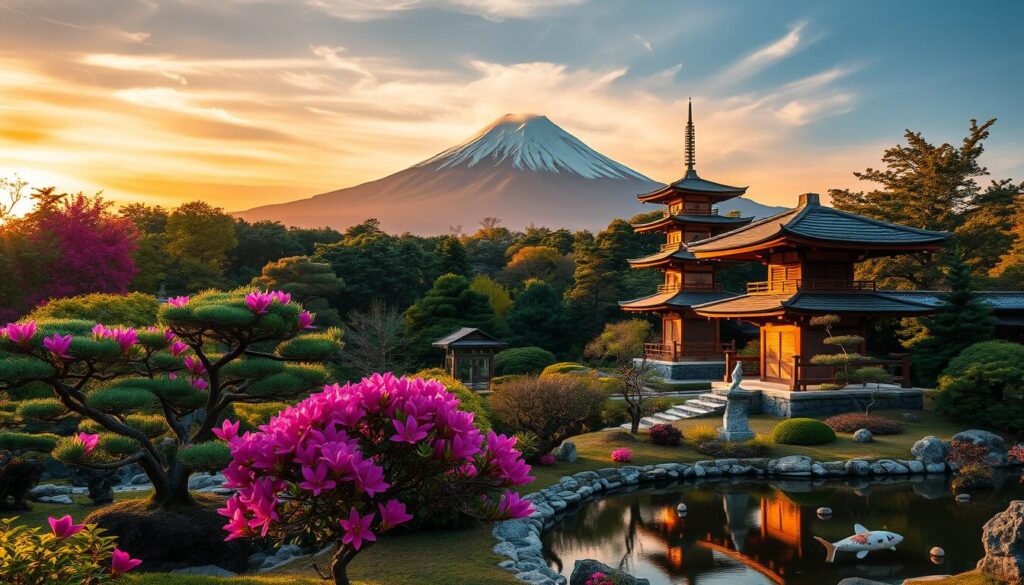
Spring in Japan: Cherry Blossom Magic
Spring in Japan is a season of breathtaking beauty, primarily due to the iconic cherry blossoms that bloom across the country. This natural spectacle is a significant part of Japanese culture, attracting visitors from around the world.
Cherry Blossom Season in Japan: Timing and Forecast
The cherry blossom season is eagerly anticipated, with forecasts playing a crucial role in planning viewing parties, known as hanami. The timing varies annually based on weather conditions.
Cherry Blossom Front Progression
The cherry blossom front, or “sakura zensen,” is a phenomenon where the blossoms bloom from south to north. This progression is closely monitored and forecasted.
Night Viewing (Yozakura) Opportunities
Many locations offer night viewing, or “yozakura,” where cherry blossoms are illuminated, creating a magical atmosphere. Popular spots include Maruyama Park in Kyoto and Ueno Park in Tokyo.
Top Hanami Viewing Spots
Japan offers numerous hanami viewing spots, ranging from urban parks to historic settings. Some of the most popular spots include:
- Ueno Park in Tokyo, known for its over 1,000 cherry blossom trees.
- Maruyama Park in Kyoto, famous for its weeping cherry blossoms.
- Hirosaki Castle in Aomori, which offers a spectacular view of cherry blossoms.
Urban Parks vs. Historic Settings
Urban parks like Ueno Park offer a lively atmosphere with food stalls and festivities, while historic settings like Hirosaki Castle provide a more serene and traditional experience.
Lesser-Known Cherry Blossom Locations
Beyond the popular spots, there are lesser-known locations that offer equally breathtaking views, such as the cherry blossom tunnel in Kawachi Fuji Garden.
Spring Festivals and Events
Spring in Japan is not just about cherry blossoms; it’s also a time for various festivals and events. These include traditional dances, food festivals, and temple fairs, showcasing Japan’s rich cultural heritage.
Summer in Japan: Festivals and Natural Beauty
Summer in Japan is a vibrant season filled with festivals, natural beauty, and a plethora of activities for travelers. As the warmth sets in, the country comes alive with summer festivals, showcasing traditional dances, music, and local cuisine.
Major Summer Festivals Across Japan
Summer is the season for festivals in Japan, with numerous events taking place across the country. Two of the most notable festivals are the Gion Matsuri and Fireworks Festivals.
Gion Matsuri and Traditional Celebrations
The Gion Matsuri, held in Kyoto, is one of Japan’s most famous festivals. It features elaborate floats, traditional performances, and street food, attracting visitors from around the world.
Fireworks Festivals (Hanabi)
Fireworks festivals, or Hanabi, are a highlight of the Japanese summer. Cities and towns across Japan host these spectacular events, with Tokyo’s Sumida River Fireworks Festival being one of the most renowned.
Dealing with Heat and Humidity
While summer in Japan is filled with excitement, the heat and humidity can be challenging. Travelers should be prepared with cooling strategies to stay comfortable.
Cooling Strategies for Summer Travel
Staying hydrated, wearing light clothing, and visiting air-conditioned spaces are essential tips for navigating Japan’s summer heat.
Rainy Season Considerations
Japan’s rainy season, known as “Tsuyu,” typically occurs in early summer. Travelers should pack accordingly, bringing rain gear to stay dry.
Summer Outdoor Activities
Despite the heat, summer is an excellent time for outdoor activities in Japan. From hiking in the mountains to enjoying the beaches, there’s something for everyone.
Hiking and Mountain Exploration
Japan’s mountains offer numerous hiking trails, with the Japanese Alps being a popular destination for outdoor enthusiasts.
Beach Destinations and Water Activities
Japan’s coastline is dotted with beautiful beaches, such as those in Okinawa, offering opportunities for swimming, snorkeling, and other water activities.
| Region | Summer Festivals | Outdoor Activities |
|---|---|---|
| Tokyo | Sumida River Fireworks Festival | Hiking in Nikko National Park |
| Kyoto | Gion Matsuri | Exploring Arashiyama Bamboo Grove |
| Okinawa | Beach Festivals | Snorkeling and diving |
“Summer in Japan is a time of vibrant festivals, beautiful landscapes, and a wide range of outdoor activities. It’s a season that offers something for every kind of traveler.”
— Japan Guide
Autumn in Japan: Spectacular Foliage
Autumn in Japan is a season of breathtaking beauty, with the country’s landscapes transforming into vibrant hues of orange, red, and yellow. This transformation, known as “koyo,” is a major attraction for both domestic and international tourists.
Koyo (Autumn Leaves) Viewing Guide
To make the most of Japan’s autumn foliage, understanding the timing of the color changes is crucial. The peak season varies by region, with temperatures and weather conditions influencing the exact timing.
Timing the Color Changes by Region
The color change typically starts in Hokkaido in late September and moves southward, reaching the Kansai region (including Kyoto and Osaka) and Tokyo by mid-to-late November. Planning your itinerary according to these timings can help you catch the peak foliage.
Photography Tips for Autumn Scenery
Capturing the beauty of autumn foliage requires some photography skills. Using a polarizing filter can help reduce glare and enhance the colors. Shooting during the golden hour, just before sunrise or after sunset, can add a warm glow to your photos.
Best Locations for Autumn Foliage in Japan
Japan offers numerous breathtaking locations for viewing autumn foliage, ranging from serene temple gardens to majestic mountains and national parks.
Temple Gardens and Historic Sites
Temples and shrines, such as Kyoto’s Kiyomizu-dera and Nijo Castle, are renowned for their beautiful gardens that become particularly picturesque during autumn.
Mountain and National Park Viewing
Nikko National Park and the Japanese Alps offer stunning mountain scenery with vibrant autumn colors. These areas are perfect for hiking and enjoying the natural beauty of Japan.
Fall Harvest and Cultural Events
Autumn in Japan is not just about foliage; it’s also a season for harvest festivals and traditional celebrations, offering insights into the country’s rich cultural heritage.
Food Festivals and Seasonal Cuisine
Autumn is a time for enjoying seasonal foods, such as chestnuts and persimmons. Many regions host food festivals celebrating the harvest, providing a taste of local cuisine.
Traditional Autumn Celebrations
Japan celebrates various traditional festivals during autumn, including the Moon Viewing Festival (Tsukimi), which honors the beauty of the full moon.
Winter in Japan: Snow, Onsens, and Illuminations
Japan’s winter season offers a unique blend of snow-covered landscapes, hot springs, and festive illuminations. As the country transforms into a winter wonderland, visitors can enjoy a range of activities and experiences that make Japan a fantastic destination during the colder months.
Japan’s Winter Wonderlands and Ski Resorts
For ski enthusiasts, Japan is a paradise, with numerous world-class ski resorts offering some of the best powder snow in the world. Hokkaido is particularly famous for its light, fluffy snow, making it a top destination for skiers and snowboarders.
Hokkaido Powder Snow Experience
Hokkaido’s ski resorts, such as Niseko and Rusutsu, are renowned for their exceptional snow quality and varied terrain, catering to all levels of skiers. The powder snow experience in Hokkaido is unmatched, with deep, soft snow that makes every run feel like a fresh adventure.
Winter Activities for Non-Skiers
Not everyone visiting Japan in winter is a skier, but there are still plenty of activities to enjoy. Snowshoeing, ice skating, and taking a leisurely winter hike are great ways to experience Japan’s winter landscapes without hitting the slopes.
Winter Illuminations and Festivals
One of the most magical aspects of winter in Japan is the illuminations (winter light displays). Cities and towns across the country are adorned with millions of twinkling lights, creating a festive atmosphere that’s hard to resist.
Urban Light Displays
Cities like Tokyo, Osaka, and Nagoya host some of the most spectacular light displays, with popular spots like Shinjuku Gyoen in Tokyo and Osaka’s Universal Studios Japan offering dazzling shows.
Snow Festivals and Ice Sculptures
Japan’s winter festivals are another highlight of the season, with the Sapporo Snow Festival being one of the most famous. The festival features elaborate snow and ice sculptures, attracting visitors from around the world.
“The Sapporo Snow Festival is a must-see winter event, showcasing incredible snow and ice sculptures that are truly breathtaking.”
Sapporo Tourism
Onsen Experience in Winter
Soaking in a hot spring (onsen) is a quintessential Japanese experience, and winter is the perfect time to enjoy it. The contrast between the cold winter air and the warm waters is incredibly invigorating.
Snow Monkeys and Unique Winter Onsen
For a unique experience, visit Jigokudani Monkey Park, where you can see Japanese macaques bathing in hot springs. Other unique onsen experiences include outdoor baths with snowy landscapes and ryokans with natural hot springs.
Ryokan Stays During Winter
Staying at a traditional Japanese ryokan during winter adds to the experience, with many offering hot spring baths, local cuisine, and cozy accommodations that make the cold winter nights feel warm and welcoming.
| Winter Activity | Location | Description |
|---|---|---|
| Skiing/Snowboarding | Hokkaido | World-class ski resorts with exceptional powder snow |
| Winter Illuminations | Various cities | Magical light displays across Japan’s cities and towns |
| Onsen (Hot Springs) | Nationwide | Relaxing hot spring baths, including unique outdoor and ryokan onsens |
Regional Considerations: When to Visit Specific Areas
The best time to visit Japan varies significantly across its regions, each with its own charm. Understanding these regional differences is key to planning an optimal trip.
Tokyo and Central Japan
Tokyo and central Japan offer a blend of traditional and modern experiences. The region is bustling throughout the year, but the best times to visit depend on your preferences.
Urban Experiences by Season
In the spring, Tokyo’s parks come alive with cherry blossoms, while summer brings vibrant street festivals. Autumn offers comfortable temperatures and beautiful foliage, and winter is ideal for visiting hot springs and enjoying illuminations.
Day Trips from Tokyo by Season
From Tokyo, day trips to nearby cities like Nikko and Kamakura are popular. Spring and autumn are ideal for these trips due to the comfortable weather.
Kyoto and Western Japan
Kyoto is renowned for its cultural heritage and seasonal beauty. The best time to visit Kyoto depends on whether you prefer serene spring landscapes or the vibrant colors of autumn.
Seasonal Temple Visits and Special Openings
Spring and autumn are peak seasons for temple visits, with many special openings during these periods. Summer brings unique experiences like lantern light-ups, while winter offers a serene, less crowded experience.
Cultural Experiences Throughout the Year
Kyoto offers a range of cultural experiences, from traditional tea ceremonies to festivals like Gion Matsuri in summer.
Hokkaido and Northern Japan
Hokkaido is a winter wonderland, famous for its ski resorts and snowy landscapes. Summer is also a good time to visit for outdoor activities like hiking.
Okinawa and Southern Islands
Okinawa is perfect for those seeking a warm winter getaway or summer beach activities. The region’s subtropical climate means it’s a great destination year-round for sun-seekers.
Practical Japan Travel Tips for Any Season
Whether you’re visiting Japan in spring, summer, autumn, or winter, having the right travel tips can make a big difference. Understanding the practical aspects of traveling in Japan can enhance your experience and reduce stress.
Packing Essentials by Season
Packing appropriately for your trip to Japan is crucial. The season you visit will significantly influence what you need to bring.
Technology and Connectivity Needs
Ensure your devices are compatible with Japan’s power outlets and consider purchasing a portable Wi-Fi hotspot for convenient internet access.
Health and Comfort Items
For comfort, pack layers for temperature control, and consider any personal health needs, such as allergy medication or a portable humidifier.
Transportation Considerations
Navigating Japan’s transportation system can be efficient with the right knowledge. Understanding your options can save time and enhance your travel experience.
Rail Pass Value by Season
A Japan Rail Pass can be a cost-effective option, especially during peak travel seasons. Calculate your travel plans to determine its value.
Getting Around in Extreme Weather
During extreme weather, having a plan for getting around is crucial. Consider using waterproof bags and umbrellas, and know the locations of indoor paths and shelters.
Booking Accommodations: Timing and Tips
Booking your accommodations in advance can ensure availability and often better rates. Timing is everything, depending on the season.
Advance Booking Windows by Season
For peak seasons like cherry blossom season or New Year (Oshogatsu), booking several months in advance is advisable. For off-peak seasons, you may have more flexibility.
Alternative Accommodation Options
Consider alternative accommodations such as guesthouses, hostels, or vacation rentals, which can offer a more local experience and sometimes more space.
Conclusion
Japan is a year-round destination, offering a unique experience in every season. Understanding the best time to visit Japan can help you plan a trip that suits your preferences, whether you’re drawn to cherry blossoms, summer festivals, autumn foliage, or winter sports.
By considering factors like weather, crowd levels, and cultural events, you can make the most of your journey. From the vibrant cities of Tokyo and Kyoto to the natural beauty of Hokkaido and Okinawa, Japan’s diverse regions have something to offer in every season.
With practical tips on packing, transportation, and booking accommodations, you’re well-equipped to navigate Japan with ease. Whether you’re looking for a relaxing getaway or an action-packed adventure, Japan is sure to captivate and inspire. So, start planning your trip to Japan today and discover the best time to visit this fascinating country for yourself.
FAQ
What is the best time to visit Japan for cherry blossoms?
The best time to visit Japan for cherry blossoms is typically late March to early April, but the exact timing varies from year to year and depends on the region. You can check the cherry blossom forecast before your trip to plan accordingly.
Are summer festivals in Japan worth attending?
Yes, summer festivals in Japan are definitely worth attending. They offer a unique cultural experience, with many featuring traditional dances, food stalls, and fireworks. Some of the most famous summer festivals include Gion Matsuri in Kyoto and Obon festivals across the country.
How can I enjoy autumn foliage in Japan?
To enjoy autumn foliage in Japan, plan to visit during the koyo season, which typically occurs in late November to mid-December, depending on the region. Popular spots include temple gardens, mountains, and national parks. You can also take advantage of autumn foliage viewing parties and enjoy seasonal food and drinks.
What are the best winter activities to enjoy in Japan?
Japan offers a range of exciting winter activities, including skiing and snowboarding in resorts like those in Hokkaido, enjoying onsens (hot springs) in a serene winter landscape, and experiencing snow festivals and illuminations. You can also visit snow monkeys in Jigokudani Monkey Park and enjoy a relaxing ryokan stay.
How does Japan’s climate vary across different regions?
Japan’s climate varies significantly across different regions. The northern parts, such as Hokkaido, experience cold winters and mild summers, while the southern islands, like Okinawa, have a subtropical climate. Understanding these regional climate differences can help you pack and plan your trip accordingly.
What are some practical tips for traveling in Japan?
Some practical tips for traveling in Japan include packing according to the season, staying connected with a suitable phone plan, and navigating the transportation system efficiently. Consider purchasing a Rail Pass for long-distance travel, and book your accommodations in advance, especially during peak seasons.
How can I make the most of my trip to Japan during peak season?
To make the most of your trip to Japan during peak season, plan ahead, and book your accommodations and popular attractions in advance. Be prepared for crowds, and consider visiting popular spots early in the morning or later in the evening to avoid the peak tourist hours.
Are there any budget-friendly options for accommodations in Japan?
Yes, there are budget-friendly options for accommodations in Japan, including hostels, guesthouses, and capsule hotels. You can also consider alternative accommodation options like Airbnb or ryokans, which offer a unique cultural experience.

